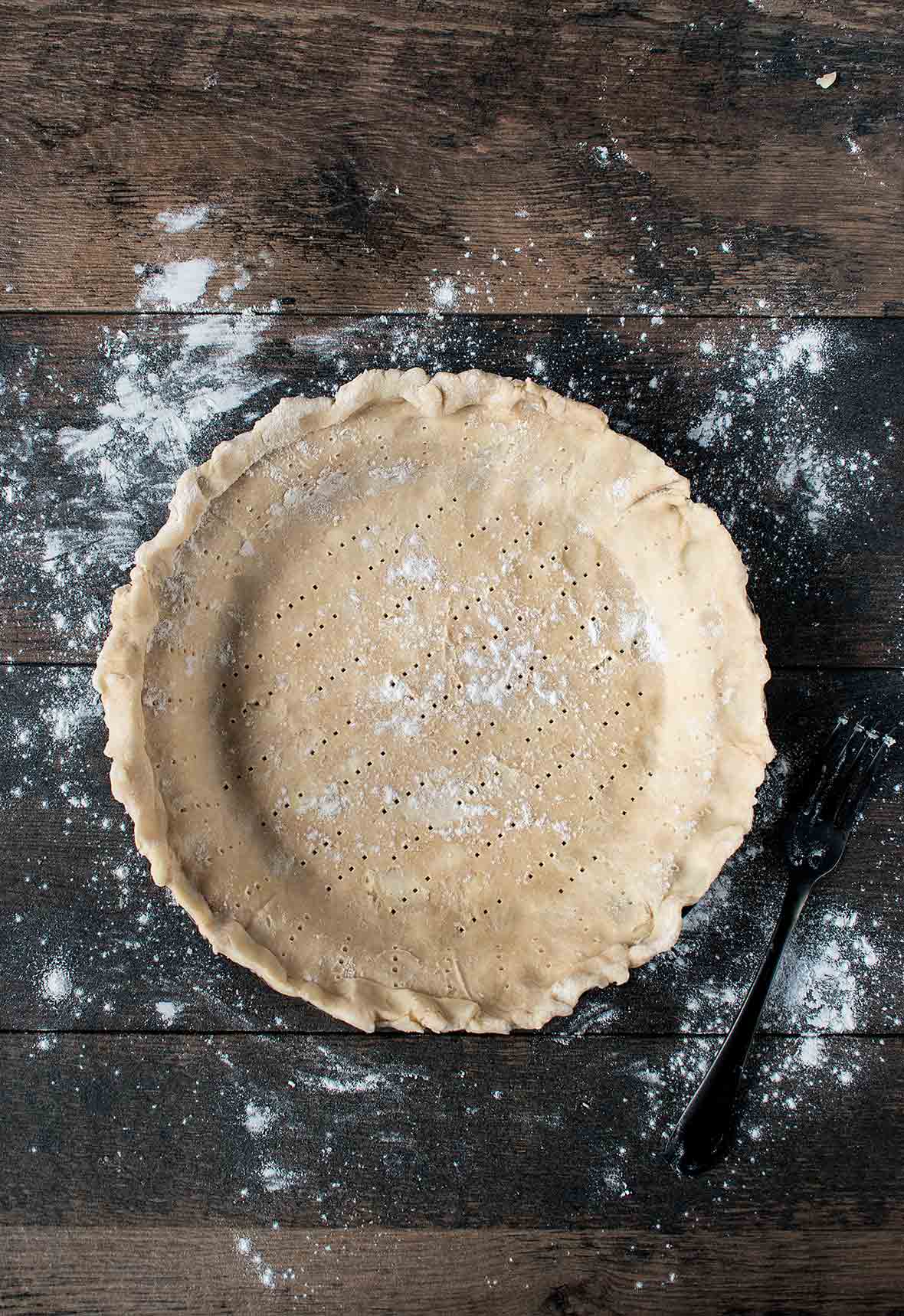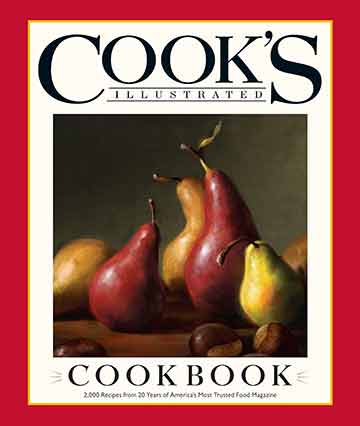

Lard and Butter Pie Crust
Ingredients
- 2 1/2 cups all-purpose flour, stashed in the freezer until cold
- 1 teaspoon salt
- 2 tablespoons granulated sugar
- 13 tablespoons (6 1/2 oz) cold unsalted butter, cut into 1/2-inch (12-mm) cubes
- 8 tablespoons (4 oz) cold lard, cut into 1/2-inch (12-mm) cubes
- 4 to 6 tablespoons ice water
Instructions
- In a food processor fitted with metal blade, combine the flour, salt, and sugar.
- Toss in the butter cubes and process with five 1-second pulses.
- Toss the cold lard into the processor and continue pulsing until the butter is no larger than the size of peas and the flour is pale yellow and resembles coarse cornmeal, about four 1-second pulses. Dump the flour mixture into a medium bowl.
- Sprinkle 3 tablespoons of ice water over the flour mixture. Working quickly, use a fork to fluff and mix thoroughly. Squeeze a handful of dough—if it doesn’t stick together, add the remaining water, 1 tablespoon at a time.
- Handling the dough as little as possible, divide it into 2 balls, one slightly larger than the other. Flatten each portion of dough into 6-inch discs. Wrap in plastic wrap and refrigerate for 30 minutes.
- On a lightly floured work surface, roll each portion of dough to slightly larger than your pie plate. Carefully drape the slightly smaller portion of dough in the plate. If desired, prick the bottom crust with the tines of a fork, if desired.
- Fill with your favorite pie filling recipe, top with the remaining portion of dough and crimp the edges. Trim any excess dough that hangs over the edge. Freeze the unbaked pie for up to several weeks or transfer it to the fridge for at least 30 minutes before baking according to your recipe. Originally published January 9, 2002.

Nutrition
Nutrition information is automatically calculated, so should only be used as an approximation.
Recipe Testers’ Reviews
This was one of the best pie crusts I’ve ever tasted. It was also one of the easiest to make. With this recipe in your arsenal, you’ll always get great compliments on your pies.











Hello,
I ran across this recipe by surfing the web looking for a great pie crust recipe. I was concentrating so hard on getting this pie crust made that I just realized that I used salted butter. I’m praying for a miracle on tomorrow because I’m making a sweet potato pie. I hope the crust is not too salty. The question I have is do I blind bake my crust before filling it with my recipe? If so, how long do I blind bake the crust with the pie weights? I know this will be a GREAT crust because lard is an old school ingredient and I hear it makes better pie crust than shortening. Thanks for your expertise!!!!!
Hi Dana, so glad you happened upon this recipe! I am so with you on the lard and butter approach to pie crust. It’s the only way I ever make pastry. As for the butter situation, I think that unless you or anyone who is served this pie has an exceptionally discerning palate, your pie crust will be fine even with salted butter. As for blind baking the crust before adding the filling, usually a recipe will indicate if a pie crust needs to be blind baked prior to adding the filling. And usually with sweet potato pie the filling needs to be in the oven so long that blind baking isn’t necessary. If you want, you can send me a link to the recipe and I’ll let you know my thoughts, but I can’t recall having seen a sweet potato pie recipe that uses blind baking, and I just googled a few random sweet potato pie recipes and they all called for unbaked pie crusts. So I would start with your lovely unbaked pie crust and just follow your recipe. No blind baking required. Best wishes!
Ms. Renee, thank you soooooo much for your quick response. You have no idea how thankful I am to you responding. This is a great recipe and I’m getting ready to roll my crust out once I get my filling made. I cannot wait to see my family’s faces when they try this pie. I know it will be a winner with a WINNING crust. Once again, thank you!!!!!!!
You are so very welcome, Dana! I hope you and your family love the pie!
Can solidfied bacon fat be used instead of leaf pork lard from the kidneys?
Monica, I make lard and butter pie crusts all the time, and I haven’t tried bacon drippings in place of lard in pie crust so I can’t say for certain, although I have used it in cookies and other baked goods and it imparts a really lovely smokiness to the finished product. My only concern would be the moisture content of the drippings and whether that may throw off the texture of the resulting crust. You would definitely want to freeze the pie crust and some folks would have you take an extra step of precaution as in this link. I would use a !:! ratio, of course, when substituting. Let us know how it goes!
Just a quick question, I’ve never made this crust recipe before. I usually use butter only. My ingredients were very cold (this isn’t my first rodeo) and I didn’t need but a tbs or 2 of water but the pastry seems a bit like a dough in texture. I’m concerned my crust is going to flop on the 4th of July! I’m known for my pies. I know kinda dumb to change crust recipes on an important holiday.
Jacqueline, as you know, pie crust is so variable depending on so many factors, including the temperature of the ingredients and the humidity in your kitchen and so, so many other things. I think just as important as those factors is how much you handle the dough. I usually use a fork to initially toss the ingredients together so as to minimize the amount of mixing I have to do with my hands. I’ve had pie crust that, like yours, seems doughy, and it usually results from me being a touch heavy-handed, so to speak, when mixing things. But in most instances it’s turned out fine. So I’d go ahead with your pie crust and see how it turns out. You may need a touch more flour when rolling it out but only add more flour if you absolutely have to. And kindly let us know how it goes. This is many, many people’s favorite pie crust recipe both for the ease with which it comes together and the final flavor and texture, so I think you’re going to be pleasantly surprised.